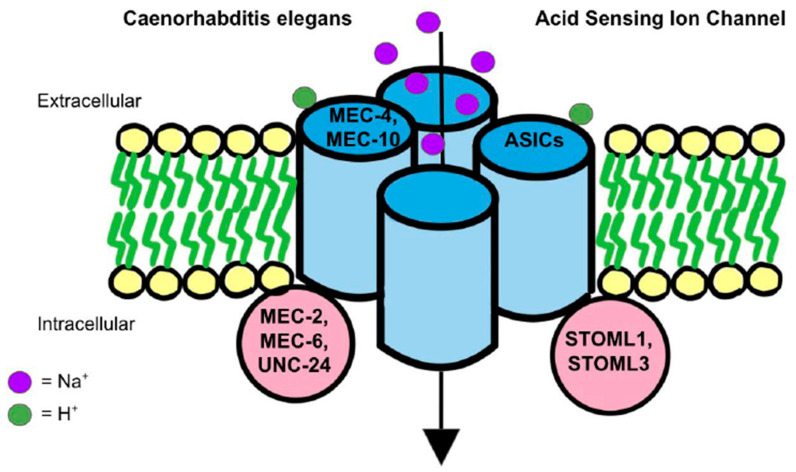Figure 2.
The mechanotransduction model found in Caenorhabditis elegans is the leading theory on the ASICs mechanosensation model in humans. On the left, as found in Caenorhabditis elegans, MEC-4 and MEC-10 are DEG/ENaC proteins that connect to touch receptor neurons and eventually act with a gating-spring mechanism to activate ASICs for mechanosensation. Similarly, intracellularly in nematodes, there are found to be MEC-2, MEC6, and UNC-24 accessory subunit proteins that loosely associate with ASICs to activate mechanosensation via a similar mechanism as well. Conversely, in mammals, ASICs are shown to contain STOML1 and STOML3 proteins which correlate with nematode accessory subunit proteins and help activate ASICs for mechanosensation as well.

